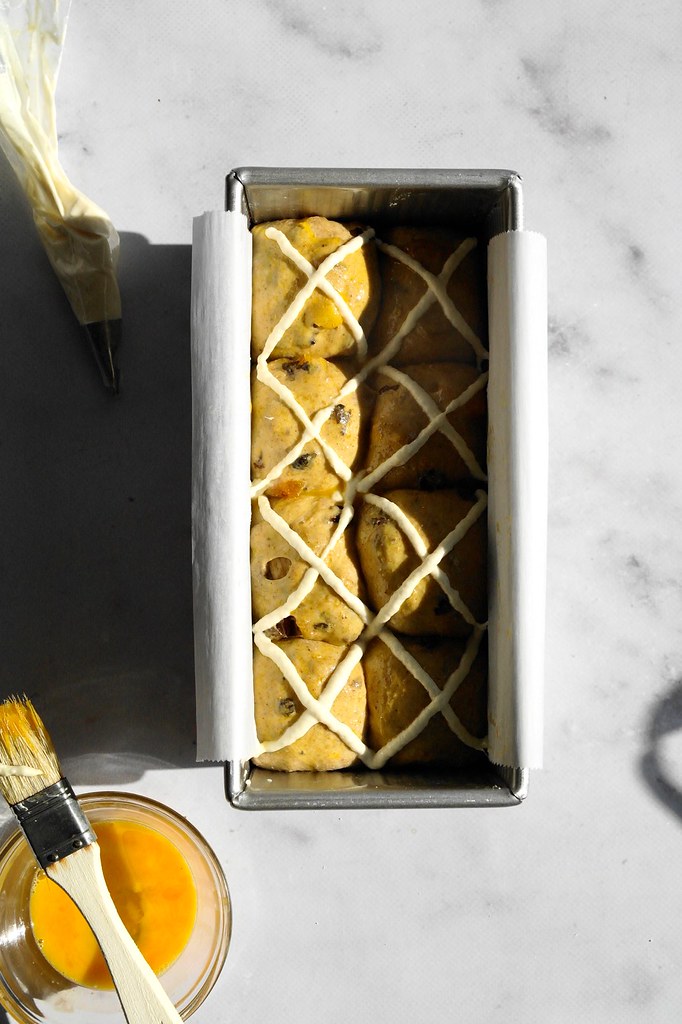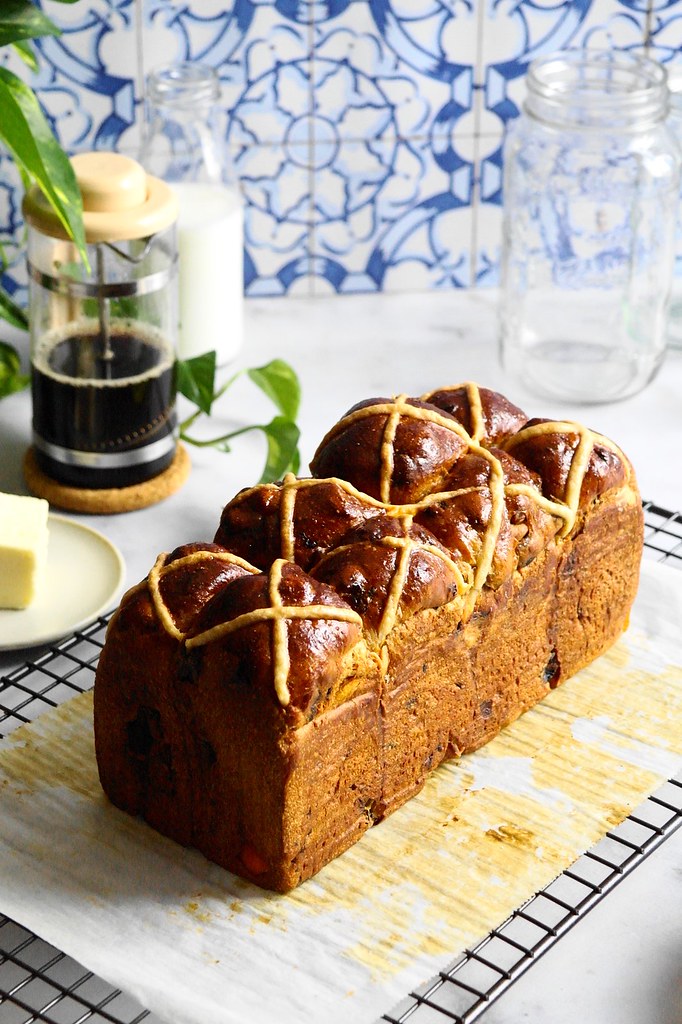
Perhaps you expected this – for if there is a savoury pineapple pineapple bun, surely there should be a sweet pineapple pineapple bun.
Introducing pineapple in a pineapple bun part 2: sweet edition!
I was initially inspired to make a pineapple bun shortcake from a brilliant strawberry shortcake pineapple bun at Pearl River Deli in LA (another example of a faraway restaurant I like to longingly look at the menu of). Analogous to an American-style strawberry shortcake, this version has all the same elements: cream, fruit, and starchy receptacle, with pineapple instead of strawberry, and biscuit swapped out for fluffy pineapple bun instead.
I tried a couple types of filling. A lemongrass-infused cream and minty pineapple was okay, but didn’t quite land right. It was the second go, a fennel seed and brown sugar pineapple, that was my favourite.
These are not easy or tidy to eat, but nor is the usual shortcake anyways – cream squishes out everywhere, it takes a bit of maneuvering to get all the components in one bite. Should you pick it up and bite it? Hack at it with a fork? There are no perfect answers to this question.
And while this was an excuse for me to make pineapple buns, you could of course do this with pineapple buns from a bakery for a quicker dessert!

pineapple & fennel pineapple bun shortcake
Enough to generously stuff 4 pineapple buns.
brown sugar fennel seed pineapple
- 1 tbsp butter
- 2 tbsp brown sugar
- 1/4 tsp fennel seeds, finely ground (or to taste, depending on your fennel preferences; feel free to leave out if you don’t like fennel)
- 1/2 pineapple, peeled, cored, sliced 1cm thick, and cut into chunks
assembly
- 180g whipping cream
- sugar, to sweeten cream to taste
- 4 pineapple buns, recipe follows
- mint leaves, chiffonaded, optional
- cilantro leaves, optional
For the brown sugar pineapple, place the butter, brown sugar and ground fennel in a pan over medium-high heat. Cook until it comes to a bubble and the sugar melts into the butter, then add the pineapple and cook for a few minutes more until the juices are reduced and syrupy, and all the pineapple is coated and warmed.
To assemble, whip the cream and add a bit of sugar to sweeten to taste. Cut the pineapple buns in half. Put a generous dollop on cream on the bottom, spoon over some warm pineapple with juices, and scattered with some chopped mint and cilantro, if using. Eat right away.
While I like the aesthetic of cream-then-pineapple, pineapple-then-cream is a bit tidier to eat I think. Up to you!
pineapple buns (makes 6)
Six pineapple buns so there are a couple extra to eat as is. Pineapple topping adapted from mthmchris and bun dough adapted from Christine’s Recipes.
pineapple bun topping
- 50g butter
- 50g granulated sugar
- 1/2 tsp baking powder
- 1/4 tsp kosher salt
- 10g egg
- 75g all-purpose flour
tangzhong
- 64g water
- 13g flour
dough
- slightly generous 1/2 tsp active dry yeast
- 1 tbsp warm water
- 50g milk
- 15g cream
- 30g egg
- 190g all-purpose flour + 6g wheat gluten (or 196g bread flour)
- 1/2 tsp kosher salt
- 30g granulated sugar
- 22g soft butter
- beaten egg for egg wash
For the pineapple bun topping, cream butter, sugar, baking powder and salt with a spoon until combined. Beat in the egg. Finally add the flour, mixing with a spoon until just combined. Scrape onto a piece of plastic wrap, mold into a short wide log, wrap and chill completely.
To make the tangzhong, whisk together the flour and water in a small saucepan until there are no lumps. Heat over low-medium, stirring constantly with a rubber spatula until the mixture thickens into a thin paste and lines are left in the roux behind when stirring (check by stirring without touching the bottom of the saucepan). If you have a thermometer, check the temperature – it should be 65C or 149F. Remove from the heat and transfer to a bowl to cool.
For the dough, mix together the yeast, tbsp of water and a sprinkle of sugar. Allow to sit 5 minutes until it bubbles and smells yeasty.
Whisk the milk, cream and egg into the tangzhong. Meanwhile in the bowl of a standmixer, stir together the flour, wheat gluten, sugar and salt. Add the dissolved yeast and tangzhong mixture. Mix slowly with the dough hook to form a cohesive dough. Add the butter and work into the dough until smooth. Knead on medium-high speed for about 10 minutes or until the dough is very smooth and elastic.
Cover and then let rest until doubled, about an hour or so
Line a baking tray with parchment paper. Turn the dough out onto a lightly floured surface and deflate it. Cut into 6 portions – each will likely be around 67g. Shape each into a ball. To tighten the surface tension, you can cup your hand over the ball of dough as it sits on the countertop and move your hand in a tight circle.
Place the balls of dough on the parchment-lined tray. Cover with plastic or a damp kitchen towel and let rise until puffed, about 45 minutes to 1 hour. To determine whether the buns are adequately risen, look for the dough to slowly bounce back when poked with a damp finger, but for the dent to not completely fill in.
Near the end of the rise start preheating the oven to 400F. Cut the log of topping into 6 slices. Take a piece, turn it so the cut side faces up, and roll it out between two small sheets of plastic wrap into a circle large enough to drape over the risen bun. Drape each bun with a circle of pineapple topping. Brush with beaten egg.
Bake for 5 minutes at 400F, then turn the temperature down to 350 for about 10 minutes more (total 15 minutes) or until the buns are golden. Let cool on a wire rack.
If you’re not using the same day, store in an airtight container and then reheat briefly in the oven to recrisp the topping. Let cool before filling.

































































